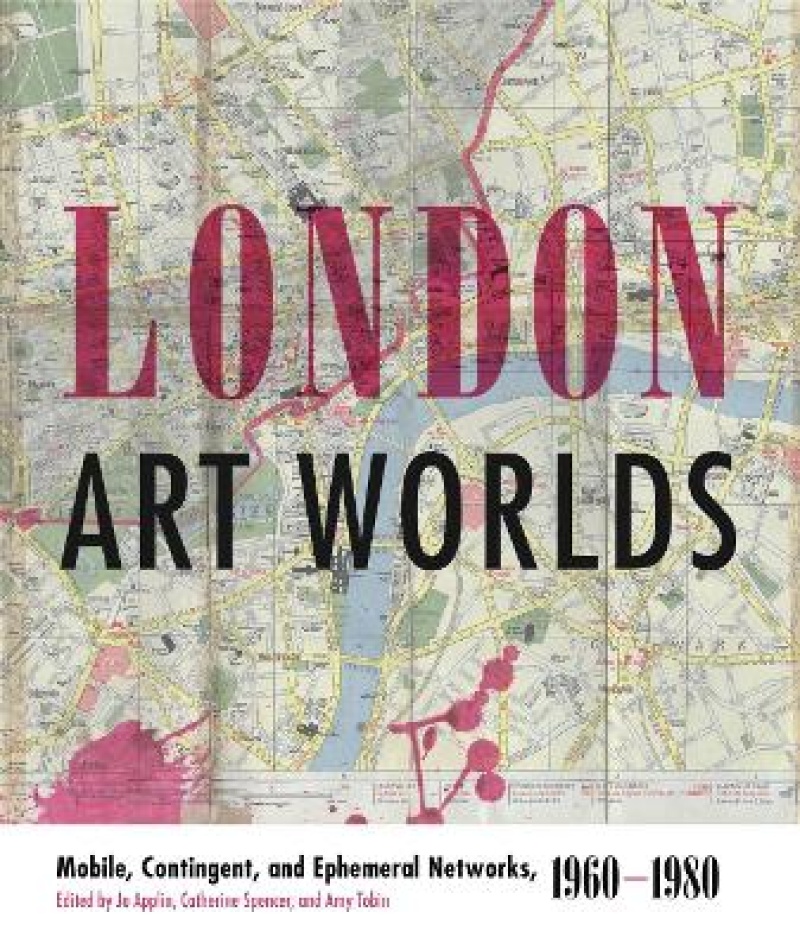<p>“The essays examine diverse practices, including interactive installation and environmental art, offering instructive discussion of intersections between art, feminism, and film and of the evolution of the London art scene in the 1960s–70s. Recommended.”</p><p>—C. J. Jolivette <i>Choice</i></p>
<p>“The volume is bound to become an essential resource for anyone working in the field of twentieth-century British art, including those with a special interest in the continued development of sculpture in the context of the dematerialization of the art object. What is more, the book will undoubtedly prompt further research into the rich artistic worlds it maps out. I, for one, am thrilled by this prospect.”</p><p>—Giulia Smith <i>The Sculpture Journal</i></p>
<p>“The sixties—less so the seventies—is a crowded field, but this original and provocative collection challenges received wisdom on the period. It casts new light on work by women artists and filmmakers; on conceptual, performance, feminist, and other kinds of politicized and often collaborative activity; on the increasingly international traffic in artists and ideas; and on a counterculture unfolding across two decades from the Britain of Harold Wilson to the emergence of Margaret Thatcher.”</p><p>—Lisa Tickner, author of <i>Modern Life and Modern Subjects: British Art in the Early Twentieth Century</i></p>
<p>“The fascinating episodes recounted in <i>London Art Worlds </i>expand, deepen, and complicate what we mean by the art history of the 1960s and 1970s—whether in the capital, across Britain, or on an international stage.”</p><p>—Thomas E. Crow, author of <i>The Long March of Pop: Art, Music, and Design, 1930 to 1995</i></p>
<p>“<i>London Art Worlds</i> is a fresh and original rethinking of experimental art practices of the 1960s and 1970s produced in Britain that provides an important supplement to critical postcolonial studies of the period. The London that emerges is not the complacently assumed center of the former empire, but a contingent site for a new set of global networks and a sometimes temporary home for a diverse range of artists who may or may not claim Britishness.”</p><p>—Siona Wilson, author of <i>Art Labor, Sex Politics: Feminist Effects in 1970s British Art and Performance</i></p>
The essays in this collection explore the extraordinarily rich networks of international artists and art practices that emerged in and around London during the 1960s and ’70s, a period that saw an explosion of new media and fresh attitudes and approaches to making and thinking about art.
The contributors to London Art Worlds examine the many activities and movements that existed alongside more established institutions in this period, from the rise of cybernetics and the founding of alternative publications to the public protests and new pedagogical models in London’s art schools. The essays explore how international artists and the rise of alternative venues, publications, and exhibitions, along with a growing mobilization of artists around political and cultural issues ranging from feminism to democracy, pushed the boundaries of the London art scene beyond the West End’s familiar galleries and posed a radical challenge to established modes of making and understanding art.
Engaging, wide-ranging, and original, London Art Worlds provides a necessary perspective on the visual culture of the London art scene in the 1960s and ’70s. Art historians and scholars of the era will find these essays especially valuable and thought provoking.
In addition to the editors, contributors to this volume are Elena Crippa, Antony Hudek, Dominic Johnson, Carmen Juliá, Courtney J. Martin, Lucy Reynolds, Joy Sleeman, Isobel Whitelegg, and Andrew Wilson.
Examines the rich networks of international artists and art practices that emerged in and around London during the 1960s and 1970s. Discusses diverse practices, movements, and spaces, from painting, sculpture, and film to performance, conceptual, and land art.
Contents
List of Illustrations
Acknowledgments
Introduction (Jo Applin, Catherine Spencer, and Amy Tobin)
1. Everything Was Connected: Kinetic Art and Internationalism at Signals London, 1964–66 (Isobel Whitelegg)
2. A Porous Entity: The Centre for Behavioural Art at Gallery House,
1972–73 (Antony Hudek)
3. Mapping the City: Felipe Ehrenberg in London, 1968–71 (Carmen Juli)
4. Restoring Some Period Color to Roelof Louw’s Pyramid of Oranges (1967) (Joy Sleeman)
5. Collectivity, Temporality, and Festival Culture in John Dugger’s Quasi-Architecture, 1970–74 (Courtney J. Martin)
6. Taking the Trouble to Sound It: Mediating Conflict in the Work of Rita Donagh (Catherine Spencer)
7. Circulations and Cooperations: Art, Feminism, and Film in 1960s and 1970s London
(Lucy Reynolds)
8. Project sigma: An Interpersonal Logbook (Andrew Wilson)
9. The Artist as a Speaker-Performer: The London Art School in the 1960s–70s (Elena Crippa)
10. File Under COUM: Art on Trial in Genesis P-Orridge’s Mail Action (Dominic Johnson)
Refiguring Modernism features cutting edge interdisciplinary approaches to
the study of art, literature, science, and cultural history.
Refiguring Modernism features cutting edge interdisciplinary approaches to the study of art, literature, science, and cultural history. With an eye to the different modernisms emerging throughout the world during the twentieth century and beyond, we seek to publish scholarship that engages creatively with canonical and eccentric works alike, bringing fresh concepts and original research to bear on modernist cultural production, whether aesthetic, social, or epistemological. What does it mean to study modernism in a global context characterized at once by decolonization and nation-building; international cooperation and conflict; changing ideas about subjectivity and identity; new understandings of language, religion, poetics, and myth; and new paradigms for science, politics, and religion? What did modernism offer artists, writers, and intellectuals? How do we theorize and historicize modernism? How do we rethink its forms, its past, and its futures?
Produktdetaljer
Om bidragsyterne
Jo Applin is Lecturer at the Courtauld Institute of Art, London. Her recent books include Eccentric Objects: Rethinking Sculpture in 1960s America and Yayoi Kusama: Infinity Mirror Room—Phalli’s Field.
Catherine Spencer is Lecturer in Art History at the University of St. Andrews. She has published articles and essays in Tate Papers, Oxford Art Journal, and the book British Art in the Nuclear Age.
Amy Tobin lectures in the History of Art at the University of Cambridge. She has published essays in Tate Papers, British Art Studies, and MIRAJ.
